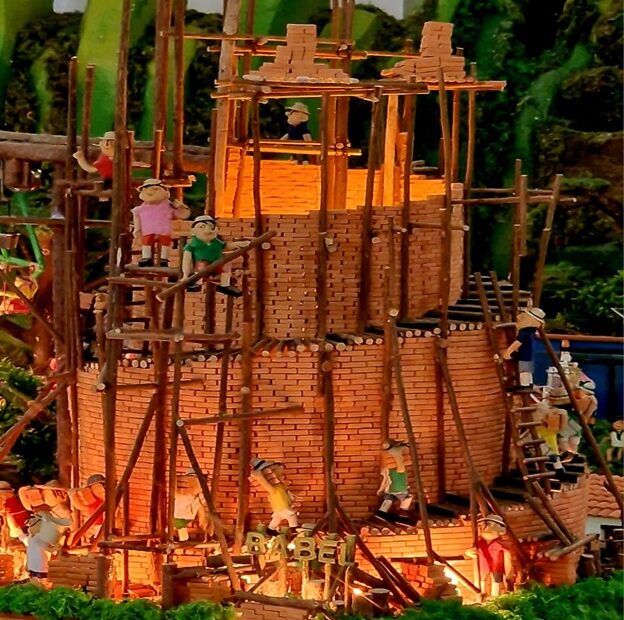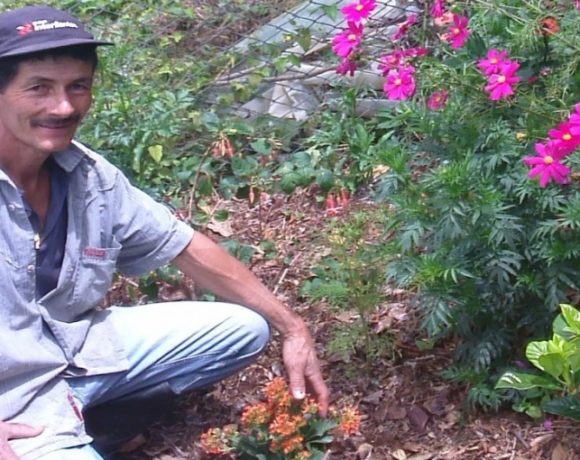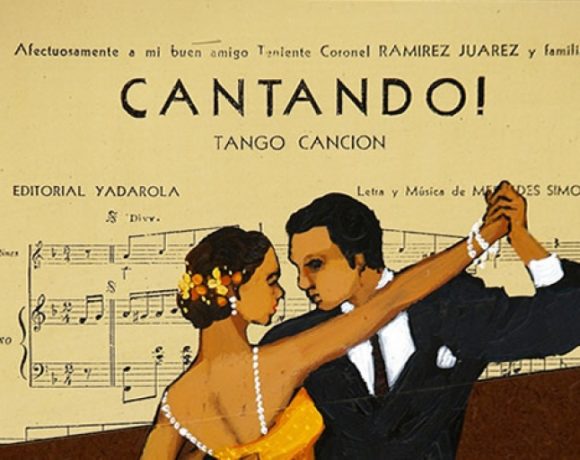Amazing Work of Art in Venecia, Antioquia: Colossal, Folkloric, Quixotic

Medellin-based professional architect Luis Fernando Betancur has over the last 18 years gradually developed what can only be described as an astonishing work of art — delighting thousands of visitors to the Santuario de San Jose church in Venecia, Antioquia (about two-hours-drive southwest of Medellin).
This world-record, 260-square-meters work-of-art in the “Costumbrista” style occupies the entire length of one nave in the church (a space roughly 70-meters-long by 8-meters-wide), featuring 2,400 individual figures (170 of which are moving), 370 buildings (covered by 180,000 tiny roof tiles), one-kilometer-length of electrical wiring, 1,450 miniature light bulbs, a 25-meters-long fantasy-river, a 50-meters-long miniature mountain range, and incredible details — so vast that visitors can find binoculars very useful to detect intricate, tiny details.
“Costumbrismo” is a relatively recent artistic movement that incorporates and depicts traditional, folkloric practices, dress and customs of a region or country — in this case, traditional Antioquian culture, dress and idiosyncracies.
Betancur’s work – although falling within the broader genre of “Nativity Scenes” – is nothing like its (supposed) peers, as you’ll never see anything like this, not anywhere on this planet.
Rather, this art-work is more like what could spring from the mind of Spanish literary master Miguel de Cervantes – an Antioquian version of “Don Quijote,” mixed with religious, folkloric and fantastical scenes (even including miniatures of Don Quijote, Sancho Panza and the Windmill).
If you haven’t read Cervantes’ master-work – or if it’s been years since you’ve hummed “The Impossible Dream” from the Broadway musical, Man of La Mancha – then do some homework before visiting Betancur’s impossible-dream-like fantasy at the Santuario de San Jose.
In an interview with Medellin Herald, here is what Betancur told us about this “glorious quest:”
“This version of a Nativity scene I’ve developed over the last 18 years, bit-by-bit. As I’m a professional architect, that expertise has enabled me to develop ‘maquetas’ [representative models] that I employ in this work.
“Although I’m not a graduate of any art school, as you know, there is much art in architecture.
“My first attempt at this [maqueta] work began 18 years ago. I dedicate this work to my home town, Venecia, where I had completed my primary and secondary education. I have great affection for my home town, and I am also a very religious person.
“About 40 years ago, I first went to the local parish and explained that I would like to make for them a Nativity scene for Santuario de San Jose. That first version, although very much appreciated by public visitors, was built on a weak foundation with an inferior material – a straw-based cardboard.
“After that first exhibition, the work was moved to a storage area in the Mayor’s office, where unfortunately it collapsed and was wrecked.
“So, after that experience, years later, I began further attempts at this work. But this time, it’s built on a durable wooden base.
“Since then, every year I’ve expanded the work, until now it occupies one entire nave of the church. And now it has become the largest Nativity model representation of its type – that is, in the ‘Costumbrista’ style, of colossal size [with many non-traditional elements compared to traditional nativity scenes).
“Given my religious convictions and my desire to share my knowledge and talents with people, I gradually expanded this work to incorporate various stories from the Bible [beyond just the typical Nativity scene].
“These include scenes as described in the ‘Old Testament’ [Christian biblical texts that partly share but also partly differ from the original Hebrew Tanakh] including Noah’s Ark, which progresses in construction from year to year.
“This year, the Ark is taking shape, with workers completing the exterior with caulking, and the animals are lined up [two-by-two], entering the Ark.
“Next year, I plan to complete this scene with a Great Flood, as in the Bible. I am now in the process of design and construction of the representation of the Flood for next year’s version of this work.
“As for the Tower of Babel in this work [see photo, above], as narrated in the Bible, this was never completed, as God instead sent humanity a confusion-of-tongues [to punish humanity for lack of humility]. So although the Tower shown in this work is higher and higher each year — as in the Bible — it will never be completed.
“Also this year as you can see is a representation of Sodom-and-Gomorrah, and next year this will include new scenes, perhaps including sound effects.
“As well, we have a representation of the Temple [in Jerusalem] in the time of King Solomon, also a small scene of Eden [with Adam and Eve and the Apple of the Fall], the baptism of Jesus by John the Baptist — all of these things are never included in a typical Nativity scene. This makes this work unique in the world.
“And each new year, visitors to this work will see new things, inspiring people to return again and again.
“Also this year I decided to incorporate characters from the world of literature, including Don Quijote and Sancho Panza [confronting the Windmill], and next year I will have Romeo and Juliet, and representations from children’s stories including Little Red Riding Hood and Pinocchio.
“We also will be depicting the Pied Paper of Hamelin and Cinderella — all within a depiction of our traditional ‘Pueblito Paisa’ [a miniature folkloric village built on Cerro Nutibara hill in Medellin, in traditional Spanish-Colonial style.]
“Next year also will be recreations of three-story buildings from Cuenca y Ronda, Spain, hanging from cliff edges, as well as a recreation of the famous [but now defunct] Tren de Antioquia [a narrow-gauge freight-and-passenger train ingeniously built through Antioquia’s mountains].
“As this is a continuously developing work, I begin work on next year’s version in December [even as this year’s version is debuting for the public]. Although I still work as a professional architect, I devote much of my day to this project.
“I have two workshops for this project – one in my home [in Medellin] and another one at my farm in Venecia – therefore I’m working all the time on making new buildings and new scenes.
“For example, this year’s version includes a typical Antioquian small-town police station and jail, where I depict prisoners attempting escapes.
“That’s something I can’t really explain. It just occurred to me in my imagination that this could happen in a typical small-town in Antioquia” — and it is an exceptionally amusing depiction that delights the crowds of visitors to the Santuario de San Jose church in Venecia.
What’s more, if you have binoculars or Superman-like vision, it’s possible to see — hanging on the walls inside a tiny artist’s workshop — miniature reproductions of iconic drawings by Medellin’s world-renowned painter-sculptor Fernando Botero, as well as Francisco Antonio Cano’s “Horizontes” — a work that locals term the definitive depiction of the centuries-past-pioneer “Paisas” pointing toward a hopeful future.
Such a novel combination of the spiritual, historical, folkloric and idiosyncratic aspects of Antioquian life — as depicted in Betancur’s ever-evolving masterwork – can provoke thoughts of the consequences of our wrong turns, but also, delightfully, to imagine a fantastical world emerging from our better-angels.
(Note to future visitors: Santuario de San Jose offers admission to this spectacle daily from 10 am, from mid-December to late January each year. Check the church’s Facebook page for details, updates and admission times: https://www.facebook.com/parroquiasanjosevenecia/?locale=es_LA)















